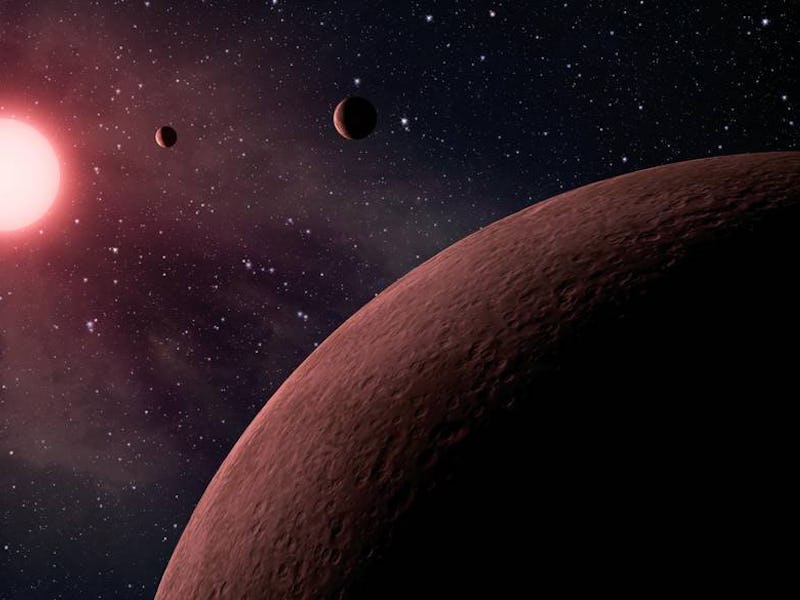These Four Newly Discovered Exoplanets Dwarf Jupiter
The new planets are over 760 times the size of Earth.

Humans have gazed out into the celestial beyond for millennia, discovering galactic entities that, paradoxically, have made us feel exceptionally important, increasingly unique, and incredibly small. The latest discovery from an international team of astronomers will elicit that same reaction: Four massive exoplanets, with masses ranging from 2.4 to 5.5 times that of our local behemoth Jupiter, have been spotted freewheeling around giant, metal-heavy stars much bigger than our sun.
Using two massive telescopes in Chile’s Atacama desert, the researchers, led by Matias Jones of the Pontifical Catholic University of Chile, had been monitoring the activity of 166 bright giant stars in a patch of the southern hemisphere’s night sky since 2009. They were using spectrographs — instruments that detect and record the breakdown of light into different wavelengths — to pick up on the signals emitted by these maybe-suns.
Massive exoplanets are massive.
Four of these stars stood out: Their radial velocities — that is, the speed at which they seemed to move relative to the Earth — showed periodic variations, suggesting that some regular thing was interfering with the signal.
Those things, it turns out, were what the researchers sweetly refer to as “substellar companions” — planetary partners that, upon closer analysis, turned out to be absolutely huge. The biggest of the four, known as HIP8541b, is the biggest, with a mass 5.5 times that of Jupiter and a planetary year equal to 1,560 Earth days. Even the smallest, HIP74890b, is still 2.4 times the mass of Jupiter — or roughly 760 times that of Earth.